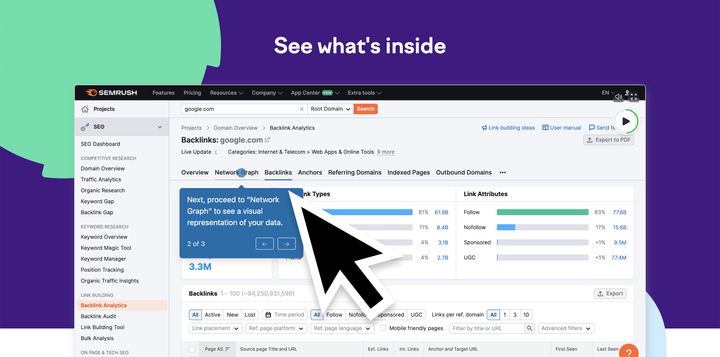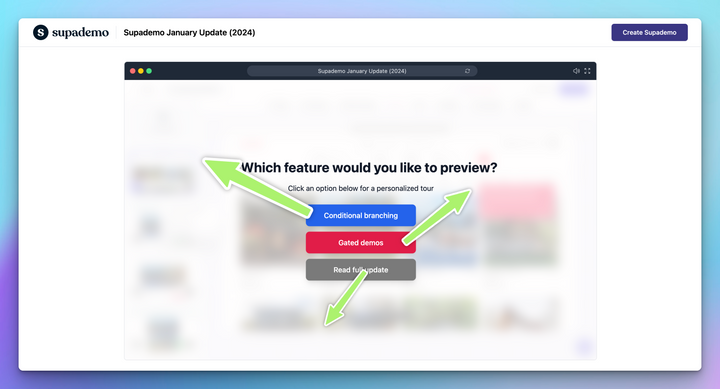TL;DR
When combined with interactive learning tools, training becomes hands-on and engaging, helping employees apply what they learn. The result is a future-ready banking workforce that stays compliant, confident, and adaptable in an ever-evolving financial landscape.
Did you know that the financial sector faces over 200 regulatory changes every single day?
For banks and financial institutions, that means constant pressure to stay compliant, up to date, and error-free. Even a small oversight can be costly.
Take Revolut, for example. In early 2025, the digital bank was fined €3.5 million by the Bank of Lithuania for gaps in its anti–anti-money-laundering monitoring. No fraud occurred, yet the failure to maintain proper transaction oversight was enough to trigger penalties and expose operational risks.
Incidents like these highlight a deeper question: how do banks keep thousands of employees up to speed with changing regulations and systems before small gaps turn into costly mistakes?
That’s where a Learning Management System (LMS) built for banking comes in.
This guide breaks down what banking LMS platforms do, which features matter most, and how interactive learning makes compliance and training more effective.
What is an LMS for banking?
An LMS for banking is a digital platform that helps financial institutions train, certify, and monitor employees on compliance, product knowledge, and operational standards.
Unlike generic systems, it’s designed for strict regulatory needs. It automates training for AML, KYC, data privacy, and cybersecurity while tracking progress and certifications automatically.
How banks benefit strategically from LMS adoption
When banks implement a robust learning management system (LMS), the impact extends far beyond compliance. A well-designed LMS helps institutions strengthen risk management, improve customer outcomes, and future-proof their workforce in a rapidly changing financial landscape.
1. Stronger risk and compliance management
A banking LMS reduces compliance breaches by ensuring every employee is trained, certified, and updated on the latest regulations.
Automated tracking and audit trails make it easier to prove adherence during inspections and internal audits. This proactive approach minimizes the chance of costly fines or reputational damage from overlooked training requirements.
2. Faster response to regulatory change
With hundreds of policy updates each day, agility is critical. An LMS allows banks to roll out new employee training instantly across regions and roles.
Instead of waiting for manual briefings, employees can access updated courses and policies as soon as regulations shift, keeping the institution one step ahead of evolving legal obligations.
3. Higher customer satisfaction and trust
By using an LMS to deliver ongoing product and service training, banks equip teams to handle complex queries, explain offerings clearly, and resolve issues quickly.
Consistent knowledge across staff builds customer confidence and reinforces the bank’s reputation for reliability.
4. Better talent retention and growth
When banks provide personalized learning paths, leadership courses, and certifications through an LMS, they create clear growth opportunities for employees in each role.
This improves engagement, reduces turnover, and helps retain top performers..
5. Future-ready workforce
As technologies like AI, blockchain, and digital payments reshape banking, an LMS ensures the workforce evolves alongside them.
Banks can introduce new modules on emerging tools and processes, enabling employees to adapt faster and support innovation safely and confidently.
From compliance management to interactive learning
While a robust LMS gives banks the foundation for continuous training and compliance, its impact depends on how employees experience that learning.
Static modules or long policy PDFs rarely do the trick.
A McKinsey research found that when training is disconnected from real-world application, a significant “learning-doing gap” emerges, leading to a 60% drop in retention. In banking, where precision and compliance are non-negotiable, this gap can translate directly into risk.
So how can banks ensure employees actually absorb and apply what they learn?
That’s where interactive demos come in.
Interactive demos are guided, click-through walkthroughs that replicate real workflows or tools, allowing employees to practice tasks in a controlled environment.
In banking, this could mean walking through a KYC verification process, simulating a loan approval in the core banking system, or navigating new AML monitoring software.
By combining the structure of an LMS with hands-on, scenario-based learning, banks can transform compliance and system training into interactive, skill-based experiences that improve both understanding and performance.
We’ve seen this approach in action with teams using Supademo to complement their LMS.
Paulina Staszuk, our Head of Customer Success, recently shared a great example of how interactive learning helps teams replace static training with guided, click-through experiences that people actually remember.
The role of LMS and interactive demos in bank employee training
A modern LMS plays a central role in how banks onboard, train, and continuously develop their employees. When paired with interactive demos, training becomes more practical and engaging, helping employees not just understand procedures but actually perform them.
Fredo Tan, Head of Growth at Supademo, highlights the versatility of interactive demos:
Let’s look at how banks use LMS platforms and interactive demos across different types of bank employee training.
Product and services training
Employees need a clear understanding of your bank’s products, from loans and credit cards to digital services. An LMS centralizes all product training, keeping teams aligned on features, eligibility, and compliance requirements.
Pairing this with interactive demos makes learning practical. Employees can walk through real workflows such as opening accounts, setting up recurring payments, or managing credit applications.
For example, here's an interactive demo of Meow Bank, created using Supademo, that shows how to set up and manage virtual and physical cards.
Customer service training
Customer-facing teams deal with daily issues that shape how customers perceive the bank. An LMS ensures everyone learns the right way to communicate, resolve problems, and handle requests consistently across branches.
With interactive demos, employees can practice real customer interactions such as resolving complaints, guiding customers through online banking, or explaining transaction policies. Practicing these scenarios builds confidence, reduces escalations, and helps staff deliver faster, more reliable support.
For example, you could create an interactive demo showing how to set up autopay on Mercury.
This helps employees learn the steps internally while also serving as an interactive product walkthrough to help customers understand the same process.
Compliance training
An LMS helps you manage mandatory compliance training programs like AML, KYC, data protection, and cybersecurity. It standardizes processes across teams, ensuring everyone follows the same approved steps.
Interactive demos reinforce this by showing how to apply these rules in real workflows. They can also serve as visual SOP guides, helping employees verify customer identities, review flagged transactions, or handle sensitive data correctly.
This approach improves accuracy, reduces compliance risks, and keeps teams audit-ready.
Change management and process updates
Banks are at the forefront of digital adoption, constantly implementing new tools, policies, and processes. An LMS helps create written documentation and send automated alerts across branches and regions so everyone understands what’s changed and how to apply it in daily work.
Pairing these updates with interactive demos improves knowledge retention and speeds up adoption. For example, when a new fraud detection tool is introduced, a demo can walk staff through reviewing alerts, escalating cases, and closing reports correctly alongside written instructions.
With Supademo, you can build a demo hub of interactive how-to guides and embed them directly into your LMS or newly introduced tools, helping teams learn faster and adapt with confidence.
Want to learn more about creating in-app demo hubs? Hear from our CEO, Joseph Lee, as he explains how to build interactive in-app product demos without any coding.
Employee onboarding
The LMS assigns mandatory courses such as AML, KYC, data security, and branch operations as soon as a new employee joins. With interactive demos, you can bundle all the tasks and processes a new hire needs to learn during onboarding into guided, hands-on modules.
This approach shortens ramp-up time, builds confidence, and ensures every new team member understands the tools and standards that keep banking operations secure and compliant.
Here’s an example of an employee onboarding kit created using Supademo that walks new hires through essential workflows, policies, and tools in a single interactive experience.
Role-based training
With an LMS and interactive demos, you can create tailored learning paths for each role. For example:
- A teller completes short quizzes and micro-modules alongside demos showing how to verify customer identity or process large cash deposits.
- A branch manager takes leadership and compliance modules with demos that guide them through reviewing audit reports or approving high-value transactions.
When training feels relevant and manageable, employees develop the right skills more quickly, remain more engaged, and experience greater satisfaction in their work.
Performance tracking and feedback
An LMS allows banks to track employee progress in real time and identify areas where additional support is needed. Managers can view course completion rates, assessment scores, and compliance status from a single dashboard.
When paired with interactive demos, tracking goes deeper. Tools like Supademo enable you to see which steps employees struggle with and use that data to refine future training or provide one-on-one coaching. This creates a continuous feedback loop that helps teams learn faster and perform better.
Key features to look for in an LMS for banking
The right LMS should do more than deliver courses — it should strengthen compliance, improve visibility, and support continuous learning across all departments. Below are the key features banks should prioritize.
| Feature | What to Look For | Why It Matters |
|---|---|---|
| 1. Compliance and Certification Management | Automate AML, KYC, and data privacy training with certification tracking, renewals, and audit-ready reports. | Reduces compliance risks, ensures employees stay certified, and simplifies audits. |
| 2. Secure Data Handling and Encryption | Use encryption for data in transit and at rest, enable MFA, SSO, and role-based access, and comply with standards like SOC 2 Type II and ISO 27001. | Protects confidential employee and regulatory data while maintaining industry compliance. |
| 3. Integrations with Existing Systems | Support integrations with HR, payroll, and CRM platforms to sync employee data, training progress, and performance metrics automatically. | Streamlines data flow, reduces manual work, and ensures consistent information across systems. |
| 4. Personalized Learning Paths | Automate role-based content delivery with tailored courses for departments, seniority levels, and regional requirements. | Improves relevance, engagement, and completion rates across teams. |
| 5. Mobile and Multilingual Access | Enable mobile-friendly, offline learning with multilingual support and compatibility with SCORM, xAPI, and video formats. | Ensures employees can access training anytime, anywhere, and supports global teams. |
| 6. Automated Reminders and Re-Certification Scheduling | Send automatic reminders and reassign courses before certifications expire to maintain compliance. | Keeps teams audit-ready and eliminates manual follow-ups. |
| 7. Real-Time Analytics and Audit-Ready Reporting | Provide dashboards that track course completion, scores, and learning progress, with easy report exports. | Offers visibility into workforce readiness and simplifies compliance reporting. |
1. Compliance and certification management
Your LMS must automate mandatory programs like AML, KYC, data privacy, and financial crime prevention. It should issue certificates upon completion, track expirations, and automatically reassign courses before renewal dates.
2. Secure data handling and encryption
Evaluate the platform’s security framework carefully. The LMS should use encryption for data in transit and at rest, enforce multi-factor authentication, and comply with standards like SOC 2 Type II, ISO 27001, and GDPR.
Look for features such as Single Sign-On (SSO), role-based access controls, and regular penetration testing to protect sensitive employee and compliance data.
Supademo offers password protection, time-sensitive links, role-based access, and domain restrictions to ensure training content stays secure and visible only to authorized users.
3. Integrations with existing systems
A banking LMS should integrate seamlessly with HR platforms like Workday, payroll systems, and CRMs such as Salesforce. These integrations sync employee records, training data, and performance metrics automatically.
Evaluate whether it supports integrations with modern learning tools that enhance interactivity and engagement.
For example, Articulate LMS integrates seamlessly with Supademo, allowing banks to embed interactive, click-through demos directly into training courses.
4. Personalized learning paths
Look for personalization features such as automated course assignments based on department or seniority, content cloning for different branches, and localized training materials.
5. Mobile and multilingual access
The LMS platform should support mobile access so employees can complete training on phones or tablets, even offline. Evaluate whether it offers responsive design, multilingual support, and compatibility with SCORM, xAPI, and video formats.
Here's an example of the Uber mobile app guide on how to add a stop:
You can easily clone your voice or add AI voiceovers, on-screen text, and one-click translations in multiple languages, making interactive training more inclusive and easy to access anywhere.
7. Automated reminders and re-certification scheduling
Look for automation across the certification lifecycle. The LMS should assign, track, and renew certifications automatically while sending alerts for upcoming expirations.
Evaluate whether it escalates overdue certifications to managers, ensuring no compliance lapses occur during audits or inspections.
8. Real-time analytics and audit-ready reporting
Detailed dashboards should show completion rates, quiz scores, time spent, and course effectiveness. Customizable reports make it easy to demonstrate compliance to regulators or internal auditors.
Advanced LMS platforms also allow data exports to BI tools for deeper insights into workforce readiness.
Building a future-ready banking workforce
So far, we’ve seen that banking regulations and digital innovation move faster than most institutions can train for. This makes the case clear: banks need scalable systems that enable learning, documentation, and real-world application at once.
A purpose-built LMS for banking provides that structure, while interactive demos bridge the gap between knowing and doing.
This is where Supademo helps.
Banks can turn complex workflows and procedures into guided walkthroughs that employees can explore at their own pace.
Whether it’s compliance training, onboarding, or tool adoption, Supademo transforms static content into interactive, visual experiences that improve retention and speed up learning.
Try Supademo for free and start building a future-ready banking workforce today.
FAQs
Why do banks need an LMS?
Banks need a learning management system (LMS) to train employees on compliance, security, and product updates across multiple branches. It ensures consistent learning, automates certification tracking, and helps teams stay audit-ready.
How does an LMS improve compliance in banking?
A banking LMS automates mandatory training for AML, KYC, and data privacy. It tracks completion, sends renewal alerts, and generates audit-ready reports, reducing manual errors and compliance risks.
What’s the difference between a regular LMS and an LMS for banking?
An LMS for banking is built for regulatory requirements, data security, and multi-branch operations. It includes audit trails, advanced reporting, and certification management tailored for financial institutions.
How do interactive demos enhance banking training?
Interactive demos let employees practice real workflows such as verifying KYC or processing loans in a guided environment. This hands-on learning improves retention and bridges the gap between theory and practice.
Can Supademo work alongside an LMS?
Yes. Supademo integrates with banking LMS platforms to embed interactive demos. It supports role-based learning paths, permission controls, and domain-based access to help teams learn workflows securely and improve engagement, compliance, and retention.
Is Supademo secure for banking and financial institutions?
Yes. Supademo offers password protection, role-based access, time-sensitive links, and domain restrictions to ensure training content is private, compliant, and only accessible to authorized employees.




